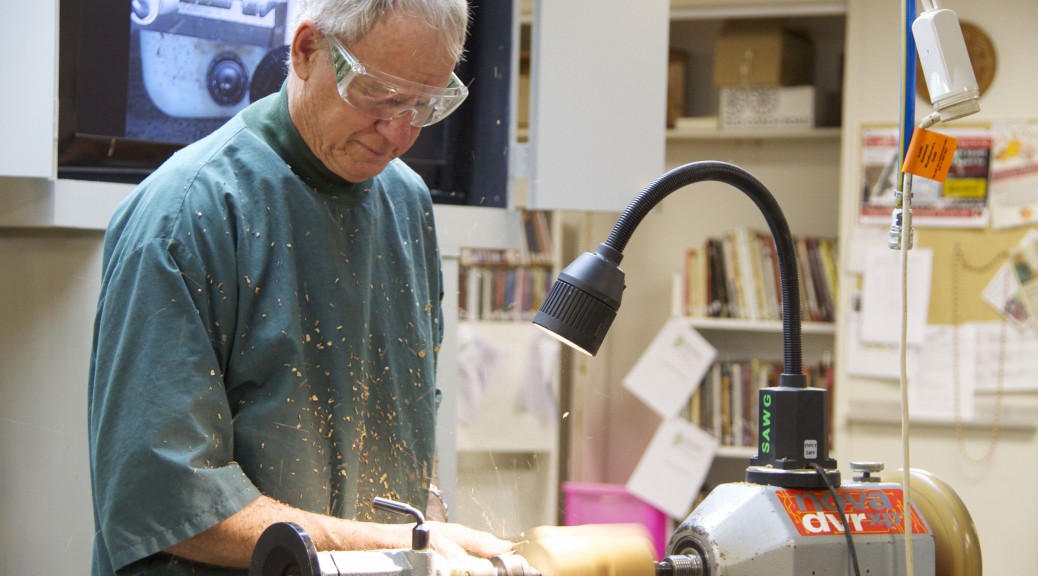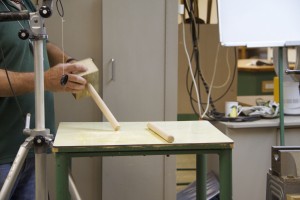Club Meeting; 25 August 2015
Report by David Jones
Phread started his demonstration by making a mallet in under 2 minutes without using the lathe at all.- simply cutting a piece off 100X75mm radiata post, drilling a hole through it with a forstner bit, cutting a length of dowel for the handle, shoving it into the head and walking away.
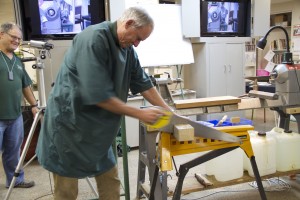
Clearly a very impressive performance from a speed point of view, but a rather useless mallet , unlikely to last..
Phread then proceeded to give an excellent demonstration on basic woodturning, and the importance of accuracy depending on the requirements of the project.
He started by showing a spurtle and a doris, both particularly shaped pieces of wood designed to stir food in a pot, and both made with a spoke shave . They were both beautiful to look at as well as excellent in doing the job they were designed for, demonstrating the use of the spokeshave and the effects of cutting with and against the grain.
The head of the mallet had already been drilled for the shaft, but as the head was to be turned off-center, Phread then spent some time discussing the need for maximum accuracy in marking the exact center of each end of the mallet head and the use of the right sized ruler and the making of the point with an awl rather than a builders pencil. The ends were marked with diagonal lines as well as right angle lines through the centre of each end and four offset points 10mm each side of the center.
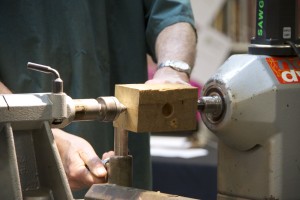
The head was then partially turned between centers before being offset 4 times using the 10mm offset points previously marked. The head was then sanded along the grain.
Putting the mallet head back on the lathe between centers, Phread then demonstrated marking and cutting the mallet head to the exact length required using a parting tool and then a skew chisel to cut off the torn grain and remove the arras on the edge.
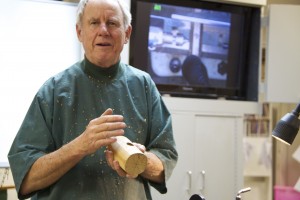
The handle had a sawcut put in it about 50mm long to take a wedge and was then roughed about 32mm except at the end where the wedge cut was where a taper was put on. A very wide cove was then put into the handle with a large spindle gouge, before Phread reverted to his favorite skew chisel to finish the bottom end of the handle and the taper so the handle would fit through the hole in the head of the mallet. All this time he was demonstrating how to stand and hold the tools so that there was minimum effort. He also pointed out the need for the wedge direction to be at right angles to the mallet head direction, to avoid the mallet head cracking when fitting.
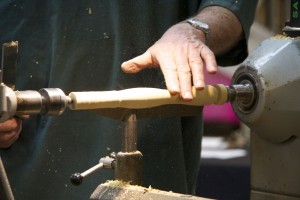
Thanks Phread for an excellent demonstration about the real basics of woodturning which are so essential for our craft.
